

There are two primary processes used to manufacture clinker: the dry process and the wet process Our plants use the dry process, which is more energy efficient In the wet2022年8月1日· Cement Manufacturing Process Flow Chart (i) Drying Zones: In the wet process, the drying zone is comparatively larger than the dry process It is because theManufacturing of Cement By Dry and Wet Process
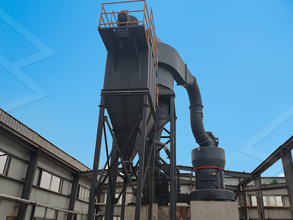
Process flow diagram for the cement manufacturing process, showing electricity and heat consumption or inputs [39] Source publication Energy Savings Associated with the UseCement Manufacturing Process Flowsheet (Flow Chart) Source publication Cement Manufacturing – Process Modeling and TechnoEconomic Assessment (TEA) usingCement Manufacturing Process Flowsheet (Flow Chart)

2016年1月20日· The purpose of this study is to examine the material flow in a typical cement production process, to quantify and understand the material flows in each2017年9月18日· Wet process a) Dry Process The both calcareous and argillaceous raw materials are firstly crushed in the gyratory crushers to get 25cm size pieces separatelyManufacture of Portland Cement Materials and Process

The flow diagram of a typical cement manufacturing process is shown in Fig 1 [3] Finally produced cement is transported in bags (packages) or as a bulk powder1999年7月26日· The three processes of manufacture are known as the wet, dry, and semidry processes and are so termed when the raw materials are ground wet and fed toCement Extraction, Processing, Manufacturing | Britannica
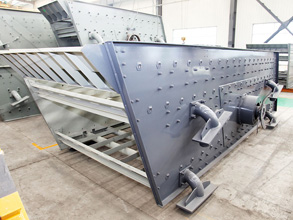
1971年8月17日· A diagram of the process, which encompasses production of both portland and masonry cement, is shown in Figure 1161 As shown in the figure, the11/21 Mineral Products Industry 1161 116 Portland Cement Manufacturing 1161 Process Description17 Portland cement is a fine powder, gray or white in color, that consists of a mixture of hydraulic1162 EMISSION FACTORS116 Portland Cement Manufacturing US Environmental

Download scientific diagram | CEMENT MANUFACTURING PROCESS FLOW CHART from publication: Industrial Geology | | ResearchGate, the professional network for scientists Join ResearchGate to access2020年4月7日· Once the clinkers are cooled, they are ground to a powdered form in tube mills At this stage, a minuscule quantity (23%) of gypsum is added to the mix to coat the cement particles and retard the setting of cement The desired cement powder is ready and is finally packed and transported Fig: Rotary kilnManufacturing Process of Cement Construction How

2023年6月14日· Cement is a crucial building material used in construction The Cement manufacturing process involves the extraction and preparation of raw materials, such as Limestone, clay, shale, iron ore, and Gypsum These materials are crushed, ground, and blended to form a raw meal, which is then heated in a kiln at high temperaturesThe carbonation curing process parameters varied, including initial curing duration, carbonation curing duration, and carbonation pressure Research findings showed that a maximum CO2 uptake of 12Process flow diagram for the production of cement
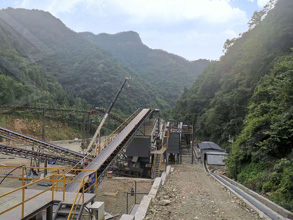
The flow diagram of a typical cement manufacturing process is shown in Fig 1 [3] Finally produced cement is transported in bags (packages) or as a bulk powder Table 1 shows the cementJoseph T Akintola In this study the process flow diagram for the cement production was simulated using Aspen HYSYS 88 software to achieve high energy optimization and optimum cement flow rateProcess flow diagram for the production of cement

2020年4月13日· Flow diagram of dry process cement Wet process ( old technology ) In the earlier part of the century ie, from 1913 to 1960, the wet process was used for the manufacture of cementEach bag of cement contains 50 kg or 0 m3 of cement Figure 1 Flow Chart of Wet Process for manufacturing of cement 1 Difference between Dry Process and Wet Process If we consider the quality and rate then wet process isCement Manufacturing: wet process and dry process Studocu
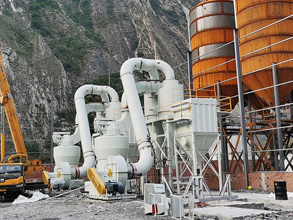
2019年11月26日· Support me here Paytm 👉 mohandangi@paytm Visit https://wwwgeotechwizard #basiccivilengineering,#constructionmaterials,#btechfirstyear2020年4月13日· The manufacture of Portland cement is a complex process and done in the following steps: grinding the raw materials, mixing them in certain proportions depending upon their purity and composition, and burning them to sintering in a kiln at a temperature of about 1350 toManufacturing of Portland Cement – Process and
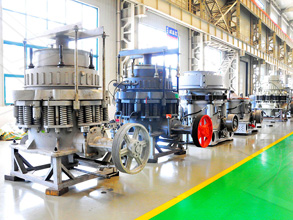
As can be seen in Fig 1 (Process and Quality flow diagram) above, there are around 8 quality check points where by different samples are taken at some time interval (every hour most of the time) to check whether the raw materials/intermediateCement is manufactured through a closely controlled chemical combination of calcium, silicon, aluminum, iron and other ingredients Common materials used to manufacture cement include limestone, shells, and chalk or marl combined with shale, clay, slate, blast furnace slag, silica sand, and ironHow Cement Is Made

Cement Manufacturing – Process Modeling and TechnoEconomic Assessment (TEA) using SuperPro Designer This is the ReadMe file of a SuperPro Designer example that simulates a cement manufacturing2023年4月24日· When used, it needs to be mixed with suitable water or additives at the construction site 2Dry process cement can be stored for a long time, usually 36 months Production Equipment Wet process cement is usually produced by cement batching plants Dry process cement is mixed by special mixing equipmentWet Process vs Dry Process Cement | LUTON GROUP

1999年7月26日· There are four stages in the manufacture of portland cement: (1) crushing and grinding the raw materials, (2) blending the materials in the correct proportions, (3) burning the prepared mix in a kiln, and (4) grinding the burned product, known as “ clinker ,” together with some 5 percent of gypsum (to control the time of set of the cement)2024年1月17日· Advantages: Wet production has the advantages of simple operation, easy control of raw material ingredients, good product quality, convenient slurry transportation, and less dust in the workshop The disadvantage is high heat consumption (clinker heat consumption is usually 52346490 J/kg) Through the above professional manufacturingWhat Do You Know About Wet Process Of Cement Production

2013年4月25日· Home»Products»flow sheet diagram for the manufacture of cement by wet process Products » Mobile Crusher HOT* » LM Vertical Mill » PEW Jaw Crusher » HPC cone crusher » MTW Milling Machine NEW* » Ultrafine Mill2022年4月21日· Concrete is a combination of cement, sand or other fine aggregates, and a coarse aggregate ranging in size from 19 to 25 mm People use concrete in a wide range of construction applications Some applications of the different types of cement include: Plastering, masonry construction, pointing, and other purposesCement: Applications, Manufacturing Process, Types and Tests

3/22 Mineral Products Industry 1161 116 Portland Cement Manufacturing 1161 Process Description17 Portland cement is a fine powder, gray or white in color, that consists of a mixture of hydraulic1162 EMISSION FACTORS 32020年8月25日· There are three steps of the hightemperature system: Drying or preheating, calcining, and sintering The calcining is the core part of the clinker production; the raw meal is weighed and sent into preheater and cement kiln to process clinker Grate cooler helps to cooler clinker,Cement Production Process | Cement Manufacturing

Download scientific diagram | 1: Simplified schematic flow chart of the dry process of manufacturing of Portland cement (after (Johannesson, 2012)) from publication: Transport in concrete withمنزل process flow diagram wet process cement manufacture philippines National Building Code of the Philippines PRESIDENTIAL DECREE (PD) NO 1096 ADOPTING A NATIONAL BUILDING CODE OF THE PHILIPPINES (NBCP) THEREBY REVISING REPUBLIC ACT NUMBERED SIXTYFIVE HUNDRED FORTYONEprocess flow diagram wet process cement manufacture

2021年4月5日· Cement is a kind of powdery material When properly mixed with water, it will turn into slurry The slurry will gradually harden in air and glue together thewet process of cement manufacture in philippines Manufacture Of Cement A flow diagram of dry process is shown in Fig 25 The purpose of adding gypsum is to coat the cement particles by interfering with the process of hydration ofProcess Flow Diagram Wet Process Cement Manufacture

Step 1: Mining The cement manufacturing process starts from the mining of raw materials that are used in cement manufacturing, mainly limestone and clays A limestone quarry is inside the plant area and a clays quarry is as far from the plant area as 25 km The limestone is excavated from open cast mines after drilling and blasting and loadedProcess flow diagram for portland cement manufacturing (SCC = Source Classification Code) 1162 EMISSION FACTORS 1/95 operations, to the extent that such replacement can be implemented without adversely affecting plant116 Portland Cement Manufacturing US EPA

On average 158 ton of raw materials are required to produce 095 ton of clinker or 10 ton of finished cement (refer to Fig 2 for a material flow diagram of the manufacturing process) Nonfuel raw material consumption can be broken down into 5 major components that provide: (1) calcium oxides, (2) aluminum oxides, (3) silica, (4) ferrous oxides, and (5)1 Convert the following flow chart into a paragraph of about 150 words The process of making cement is described in this flow chart The two raw materials used in theprocess are limestone and clay Limestone is crushed, sizedCement Manufacturing Process Flow Chart Free PDF

The flow diagram of a typical cement manufacturing process is shown in Fig 1 [3] Finally produced cement is transported in bags (packages) or as a bulk powder Table 1 shows the cementDownload scientific diagram | Process flow diagram for the manufacture of cement [2] from publication: Environmental Risk Assessment, Health Hazards and Aspect of EcoLabeling of Cement DustProcess flow diagram for the manufacture of cement [2]

2022年4月8日· Semidry Process of Cement Manufacturing The blended meal will be sieved and then fed into the rotating dish in a semidry process It is known to us as the granulator The water content in this will also be about 12% of the meal being added simultaneously As a result, the hardThe operations involved in the wet process of cement manufacture are mixing; burning and grinding The crushed raw materials are fed into ball mill and a little water is added to make thick paste This paste, usually contain about 14% of moisture is dried and made ready for the feed of rotary kiln where it loses moisture and forms into lumps or nodulesFlow diagram of manufacturing of cement The operations

2018年8月3日· Burner Burner The kiln exit gas temperature will depend on the process Dehydration Dehydration zone zone 450°C 450°C 800°C 800°C 840°F 840°F 1470°F 1470°F Gas Gas Temp Temp Calcination Calcination zone zone 1200°C 1200°C 2190°F 2190°F Clinkering Clinkering Cooling Cooling zone zone zone zone 1500°C 1500°CProcess flow diagram for portland cement manufacturing (SCC = Source Classification Code) 1162 EMISSION FACTORS 1/95 operations, to the extent that such replacement can be implemented without adversely affecting plant116 Portland Cement Manufacturing US EPA

2024年2月28日· About us Company Profile Investments, Subsidiaries & Joint Ventures Memberships Company Status Shariah Compliance Certificate National Tax Number Registration Number Group Companies Yunus Brothers Group2018年6月1日· All the cement plants set up after 1980 use the dry process for the manufacture of cement In this process, the calcareous materials such as limestone are crushed and stored in silos or storage tanks The argillaceous material such as clay is thoroughly mixed with water in a container known as the wash millCement Manufacturing Process: How the Cement is Made

The process of making cement is described in this flow chart The two raw materials used in theprocess are limestone and clay Limestone is crushed, sized, dried and stored in storage silos In the same way, Clay is washed
